
In 1976, Richard Zanuck and David Brown began a long struggle to bring to life a remake of the George Pal classic, When Worlds Collide. Initially conceived as a sequel to that classic film, they converted their efforts to a remake that would focus more on the individuals affected by looming disaster than the event itself. For two decades, few executives or financial backers showed interest.
Their fortunes reversed in 1995 when NASA widely publicized project “Deep Impact,” a mission to hurl a probe into the comet Tempel on 4 July 2005. The program was revolutionary and would tell much about the nature of the solar system and perhaps, the universe itself. Scientists were excited about it. So were many ordinary people.
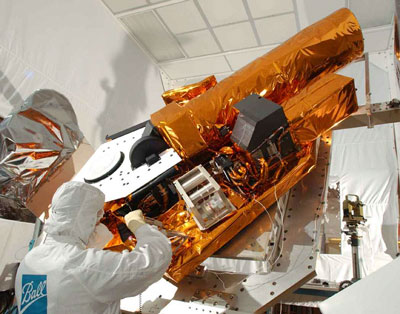
Concurrently, public interest in space collisions was growing. Increased findings indicating that the dinosaurs had been wiped out 65 million years ago in a horrific collision between the Earth and an asteroid promoted numerous documentaries, not only about dinosaurs, but also about the danger we faced from space bodies that might be heading our way. The stage was set. Inspired by the sudden public interest, studio executives looked approvingly at the pairs’ previous efforts. Funds flowed in and a When Worlds Collide remake was underway.
Yet, the decision-makers wanted a movie that closely matched the concepts of the NASA mission. Richard Zanuck and David Brown reworked their script to create a story of ordinary people suddenly faced with the probable destruction of all life. Unlike the When Worlds Collide scenario on which the film was originally based, the new script for Deep Impact portrayed the horror of the dangers of all life being wiped away in an unstoppable blast.
Like the dinosaurs, humans would face extinction at the hand of God; wiped away and forgotten. Seeking to overturn the impersonal approach of When Worlds Collide, the Deep Impact script had a true human drama that would capitalize on both the current popular interest in the subject and the emotional story behind it. It was a perfect mix.

In fact, it was too perfect. Rival studio executives learned of the project immediately. Realizing the potential of such a film, they rushed to produce Armageddon, a Bruce Willis action film whose script was so similar to that of Deep Impact to be totally beyond any chance of coincidence. Armageddon was an action film, stripped clean of its emotional drama. Where Deep Impact focused on tragedy, Armageddon focused on adventure. Both films played in the theater at the same time. The results were devastating for Deep Impact. Given the choice, more patrons went for action and comedy than the serious story Zanuck and Brown were trying to tell. The movie was a hit by box office standards, but only a fraction of the hit it should have been.
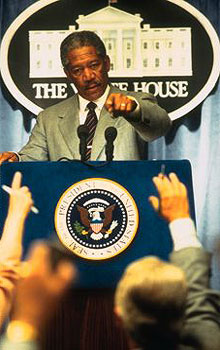
Where When Worlds Collide focused on the power of the American industrial base, and the capability of a few men working for a common goal to accomplish amazing tasks, Deep Impact showed the value of working together. In this tale, the American president (Morgan Freeman) makes hard decisions to try to preserve life. He enacts what plans he can and works well to save what elements he can of modern society. Where George Pal’s classic showed a small group rushing for survival, Deep Impact showed the American government working with others to try to save what might be saved of humanity.

The political aspects of Deep Impact were strengthened and well portrayed. Much of the film focuses on the need to keep the impending disaster secret from the general population until enough progress can be made with countermeasures to keep the masses from panicking. A central story follows a young reporter (Tea Leoni), whose personal conflict with her father and struggles to attain a successful media career are suddenly wiped away as she learns of the impending impact. Although there are several stories throughout this film, her story rises well above the others. The acting is superb and her final decisions are moving to even the most hardened viewer.
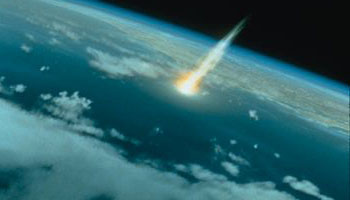

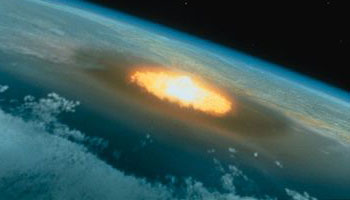
Also of note is the actual impact itself. When the comet enters the Earth’s atmosphere you feel your stomach leave you. It is literally a chilling sight. The mass hits the ocean and hurls a massive tidal wave at the east coast of the United States that rips through city and forest alike. The depiction of massive disaster is stunning, although you may have to ignore one or two less than believable events.
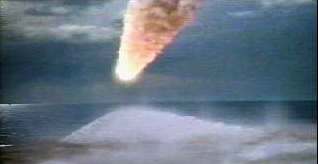
Originally, Steven Spielberg was scheduled to direct this film. When he learned that the story had been trumped by the making of Armageddon, which managed to schedule a release a couple of weeks earlier, he backed out of the project leaving Mimi Leder as the new director. Few would ever be able to tell the difference. The introductory events seem to have a distinctive Spielberg style and the final conflicts are very powerful. They have a much harder edge than Spielberg’s films, the opening battle of Saving Private Ryan notwithstanding.
Deep Impact is well worth the view, if only to compare it to George Pal’s original vision.
– written by the Two-Brained Cylon